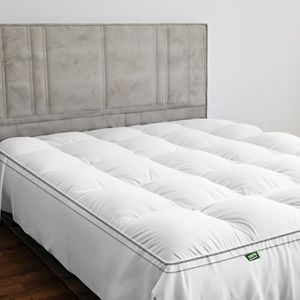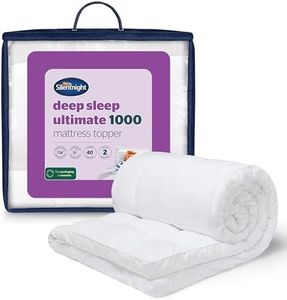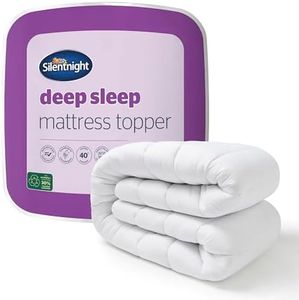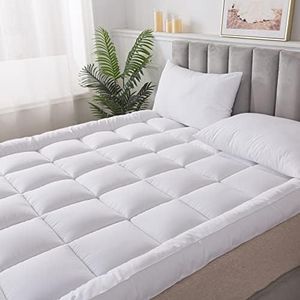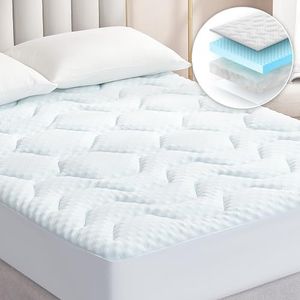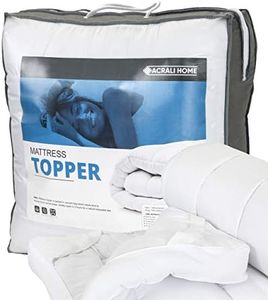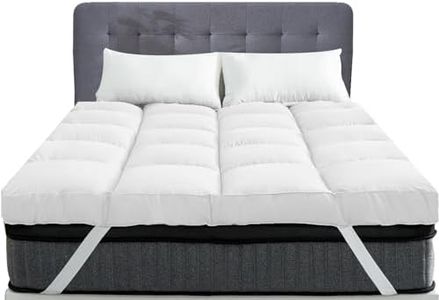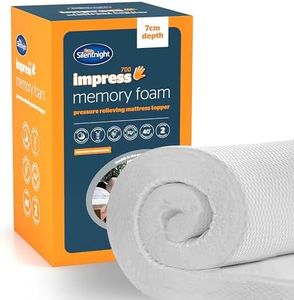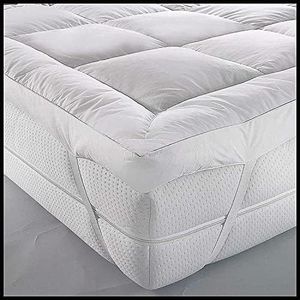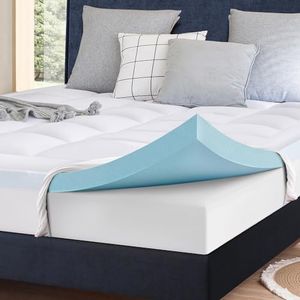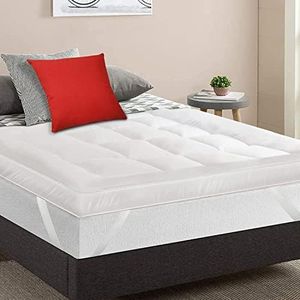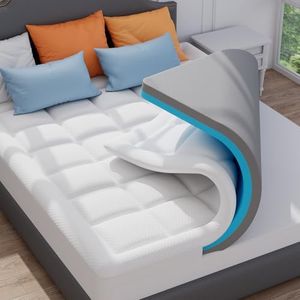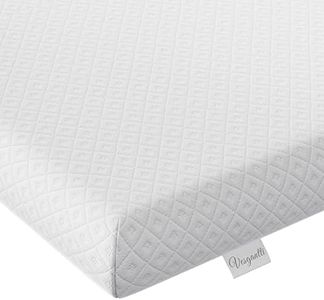Buying Guide for the Best Affordable Mattress Toppers
Choosing the right mattress topper can significantly improve your sleep quality without the need to invest in a new mattress. Mattress toppers come in various materials, thicknesses, and firmness levels, each catering to different sleep preferences and needs. Understanding these key specifications will help you make an informed decision and find the best fit for your comfort and support requirements.MaterialThe material of a mattress topper affects its comfort, support, and durability. Common materials include memory foam, latex, down, and polyester blends. Memory foam contours to your body, providing excellent support and pressure relief, making it ideal for those with joint pain. Latex is more responsive and cooler, suitable for those who sleep hot. Down toppers offer a plush, luxurious feel but may not provide as much support. Polyester blends are budget-friendly and hypoallergenic but may not last as long. Choose a material based on your comfort preference, support needs, and any allergies you may have.
ThicknessThickness determines the level of cushioning and support a mattress topper provides. Toppers typically range from 1 to 4 inches thick. A 1-2 inch topper adds a slight layer of comfort and is suitable for those who want to enhance their mattress without significantly altering its feel. A 3-4 inch topper offers more substantial support and is ideal for those looking to soften a firm mattress or add more cushioning for pressure relief. Consider your current mattress condition and how much additional comfort you need when selecting the thickness.
FirmnessFirmness levels in mattress toppers range from soft to firm. A soft topper provides a plush, cushioned feel, making it suitable for side sleepers who need extra pressure relief for their shoulders and hips. A medium-firm topper offers a balance of support and comfort, ideal for back sleepers. A firm topper provides the most support and is best for stomach sleepers or those who need to firm up a too-soft mattress. Your sleeping position and personal comfort preference should guide your choice of firmness.
DensityDensity, particularly in memory foam toppers, affects durability and support. Density is measured in pounds per cubic foot (PCF). Low-density foam (2-3 PCF) is softer and less durable, suitable for occasional use or lighter individuals. Medium-density foam (3-5 PCF) offers a good balance of comfort and support, making it a versatile choice for most sleepers. High-density foam (5+ PCF) is the most durable and supportive, ideal for heavier individuals or those needing significant pressure relief. Consider your weight and how long you want the topper to last when choosing the density.
Cooling FeaturesCooling features in mattress toppers help regulate temperature and prevent overheating during sleep. Materials like gel-infused memory foam, breathable latex, and moisture-wicking covers can enhance airflow and dissipate heat. If you tend to sleep hot, look for toppers with these cooling technologies to ensure a comfortable night's sleep. Evaluate your sleeping environment and personal temperature preferences when considering cooling features.
Hypoallergenic PropertiesHypoallergenic mattress toppers are designed to resist allergens like dust mites, mold, and bacteria. Materials such as latex, wool, and certain synthetic blends are naturally hypoallergenic. If you suffer from allergies or asthma, choosing a hypoallergenic topper can help create a healthier sleep environment. Assess your sensitivity to allergens and opt for a topper that minimizes potential triggers.

